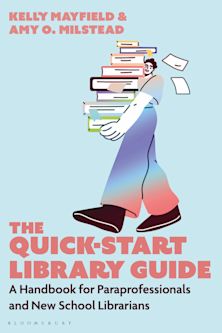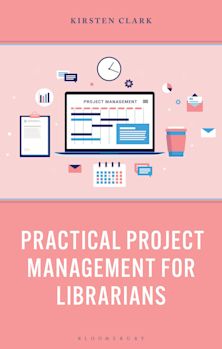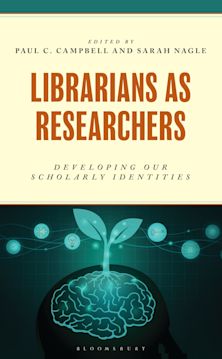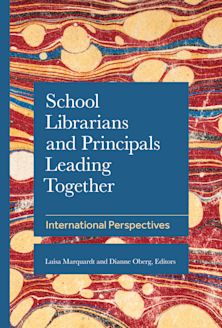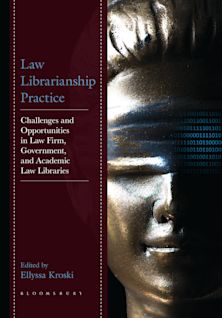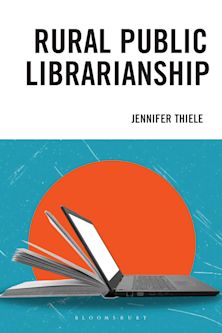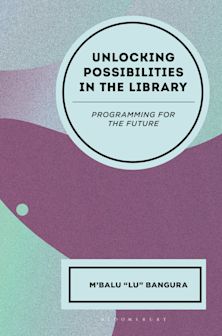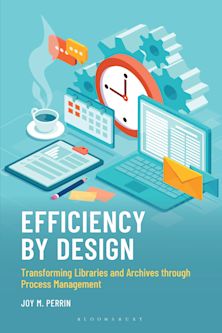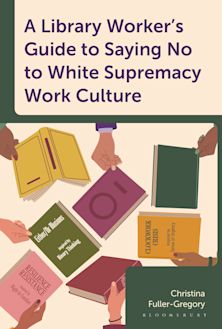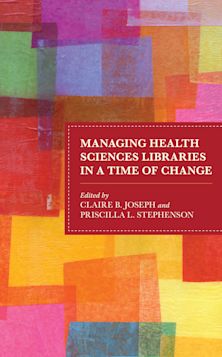- Home
- ACADEMIC
- Library & Information Science
- Library Management, Administration and Leadership
- The New Information Literacy Instruction
The New Information Literacy Instruction
Best Practices
The New Information Literacy Instruction
Best Practices
You must sign in to add this item to your wishlist. Please sign in or create an account
Description
The new ACRL information literacy concepts brings renewed interest in information literacy instruction and skills for librarians. The New Information Literacy Instruction: Best Practices offers guidance in planning for and implementing information literacy instruction programs in a wide range of instructional situations, including:
Course-related instructionFreshman composition coursesProfessional medical educationNew course development and deliveryOne-shot sessionsFormal, credit coursesDistance educationVisual literacyand moreAs librarians take a new look at information literacy instruction, this essential book will help guide you in creating and maintaining a quality instruction program.
Table of Contents
Acknowledgments
Part I: Supporting Specific Academic Programs
Chapter 1. Think Like A Researcher: Integrating the Research Process Into the Introductory Composition Curriculum
Susan Mikkelsen and Elizabeth McMunn-Tetangco
Chapter 2. Pairing Course Assessment with Library Instruction Assessment of Freshmen Composition: A Collaborative Project
Heidi Slater, Michelle Rachal, and Patrick Ragains
Chapter 3. Best Practices in Information Literacy Instruction in Health Science Education: Case Study of Developing an Information Literacy Program in a College of Medicine
Suzanne Shurtz and Laura Ferguson
Chapter 4. Developing, Teaching, and Revising a Credit-bearing Information Literacy Course: Research in the Information Age
Patrick Ragains
Chapter 5. Building Bridges for Student Success
Cindy A. Gruwell
Part II: Innovative Models for Information Literacy Instruction
Chapter 6. Right on Time: Best Practice in One-Shot Instruction
Heidi Buchanan and Beth McDonough
Chapter 7. The Role of the Flipped Classroom in Information Literacy Programs
Sara Arnold-Garza
Part III: Branching Out: Teaching Special Literacies
Chapter 8. Visual Literacy
Benjamin R. Harris
Chapter 9. Information and Scientific Literacy Support: Aligning Instruction with Standards and Frames to Prepare Students for Research and Lifelong Learning
Michele R. Tennant, Mary E. Edwards, Hannah F. Norton, and Sara Russell Gonzalez
Chapter 10. Diving into Data: Developing Data Fluency for Librarians
Scott Martin and Jo Angela Oehrli
Chapter 11. Teaching Spatial Literacy: Location, Distance, and Scale
Eva Dodsworth and Larry Laliberté
Chapter 12. Best Practices for Teaching with Primary Sources: A Case Study
Ellen Swain
Chapter 13. Digitizing History: A New Course That Brings History to Wider Audiences
Patrick Ragains
Index
About the Contributors
Product details
| Published | 05 Nov 2015 |
|---|---|
| Format | Ebook (Epub & Mobi) |
| Edition | 1st |
| Extent | 244 |
| ISBN | 9781442257948 |
| Imprint | Rowman & Littlefield Publishers |
| Series | Best Practices in Library Services |
| Publisher | Bloomsbury Publishing |
About the contributors
Reviews
-
The book’s collection of edited chapters can be read and enjoyed individually or as a whole. The editors have done an excellent job of highlighting instruction examples and case studies that should appeal to librarians with interest in ideas, approaches, and models for instructional engagement that may span one-shot sessions through complete academic courses…. This very valuable and informative book reflects this interesting time of transition in library information literacy instruction, where within different timeframes, and to varying degrees, many librarians are engaging and experimenting with the Framework in their current instructional programs. Like the Framework, this book will challenge librarians to give fresh consideration to many of their current instructional practices.
Communications in Information Literacy
-
[This] is a volume I am sure to refer to in the future as my patrons' ILI needs change. Showing ACRL's 2015 Framework through real-life examples not only provides readers an opportunity to reflect on the status of their current programs, but also provides information on the ways in which they might incorporate the six frame for patrons and staff alike. This book is recommended for any library that supports any level of research.
Journal of the Medical Library Association
-
The New Information Literacy Instruction: Best Practices builds on this culture of sharing by presenting 13 well-written and informative case studies that represent ‘best practices in information literacy instruction’…. This combination of best practices that are linked to nationally recognized standards will be a great asset to librarians who are struggling to update their own information literacy practice during this time of transition to the new Framework…. According to the editors, the goal of The New Information Literacy Instruction was to ‘aid librarians in creating lessons and programs of their own’ by presenting several case studies that highlight effective IL practices. Based on the quality of the chapters, it is clear that they have succeeded. Each one provides a unique perspective on different IL challenges and librarians are encouraged to read each one…. The reason why is because each one provides its own practical advice, battle-tested resources, and proven IL strategies that anyone can borrow and adapt to fit their own circumstances. As a result, The New Information Literacy Instruction should become a frequently consulted resource for many instructional librarians.
Medical Reference Services Quarterly
-
The New Information Literacy Instruction: Best Practices, edited by Pat Ragains and M. Sandra Wood, is a valuable addition to instructional practices in all kinds of libraries, in particular academic libraries. The publication of this work is timely in light of the Association of College & Research Libraries recently revised Information Literacy Framework, which translates professional standards into more practical application. Each chapter addresses specific areas of library instruction, including discipline-specific to special literacies, all within the context of our professional information literacy guidelines. Librarians can adapt the examples provided or use them as a springboard for creating their own best practices in their liaison areas or specific areas of focus for providing information literacy instruction.
Mary Anne Hansen, Professor/Research Commons Librarian, and Subject Librarian for Education, Health & Human Development, Nursing, and Psychology at Montana State University
-
The New Information LiteracyInstruction: Best Practices is one of those smart and uncommon volumes that genuinely advances the field. Editors Ragains and Wood have assembled a valuable collection of essays from authors who represent the new guard of information literacy practitioners and innovators.
Christopher Hollister, Education Librarian, University at Buffalo, SUNY













